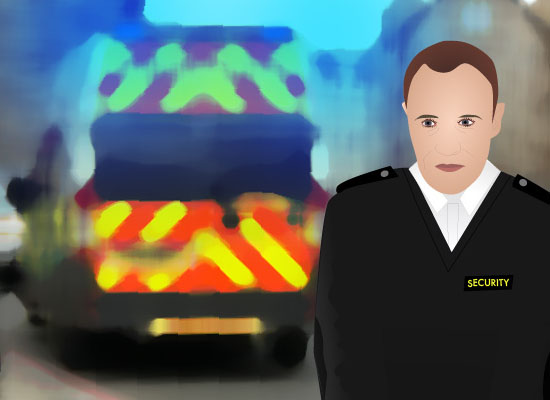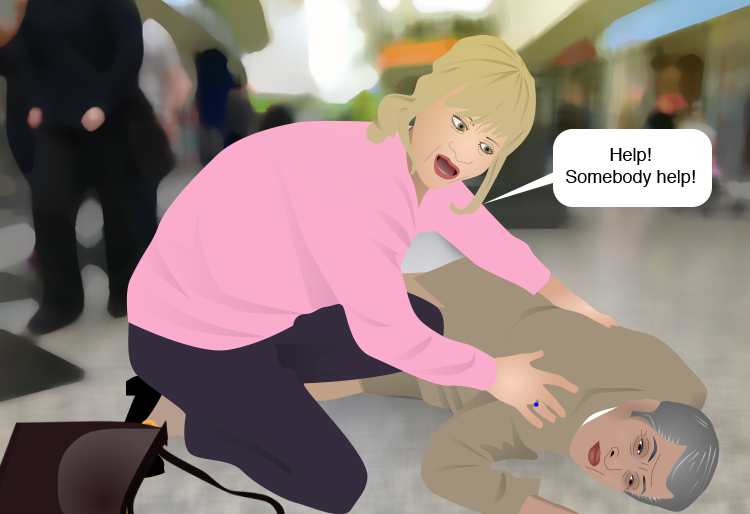Please enable JavaScript in your browser to see this interactive content.
Category: HEARTe
Edward’s rehabilitation & aftercare
On admission to hospital, Edward is sent for tests which confirm that he has had a myocardial infarction (heart attack). He is admitted to hospital where he has a percutaneous coronary intervention (PCI) to improve the blood flow to his heart. After 48 hours, he is discharged home with no significant physical deficits.
Cardiac Rehabilitation
Edward’s GP refers him for a programme of cardiac rehabilitation.
Cardiac rehabilitation can be defined as:
“The co-ordinated sum of activities required to influence favourably the underlying cause of cardiovascular disease, as well as provide the best possible physical, mental and social conditions, so that the patients may, by their own efforts, preserve or resume optimal functioning in their community and through improved heatlh behaviour, slow or reverse progression of the disease”. (British Association for Cardiovascular Prevention and Rehabilitation, 2012.)
A list of cardiac rehabilitation programmes offered in Scotland can be found at:
During his 6-week rehabilitation programme, Edward receives the information, education and support that he requires to deal with the implications of having had a heart attack and subsequent OHCA.
General information on cardiac rehabilitation
For Edward:
- British Heart Foundation: Cardiac rehabilitation
- British Heart Foundation: Cardiac rehabilitation: Your questions answered
Edward is keen to have control over his own recovery and rehabilitation process. The Self Management Toolkit (link below) is written for people with long term conditions, rather than acute conditions, but it contains a lot of information and ideas for self management that Edward might find helpful:
The Heart Manual (2016) is a home based supported self-management programme suitable for individuals recovering from a MI/PCI:
Edward is offered the opportunity to access the Heart Manual but decides to attend group rehabilitation classes in his local area.
For responders:
The following guidelines and standards provide useful information on cardiac rehabilitation:
- SIGN: SIGN 150: Cardiac rehabilitation
- The British Association for Cardiovascular Prevention and Rehabilitation: The BACPR Standards and Core Components for Cardiovascular Disease Prevention and Rehabilitation 2017
A learning module on Cardiac Rehabilitation can be found at:
- HEARTe Cardiac Rehabilitation module (John’s case study contains particularly useful information).
Scottish Ambulance Service staff arrive
A paramedic arrives by car, closely followed by an ambulance manned by a paramedic and a student ambulance technician. One of the paramedic assumes the role of team leader and allocates responsibilities within the team.
Please enable JavaScript in your browser to see this interactive content.
Edward is taken to the ambulance, accompanied by Fiona, who is so upset that she does not acknowledge Craig before she leaves. The paramedics travel in the back of the ambulance. As he has been responsible for informing and supporting Fiona while Edward was prepared for transport, the student technician drives the ambulance, with Fiona alongside him. Before he leaves, one of the paramedics congratulates Craig on a “job well done.”

Research (Mathiesen et al, 2016) suggests that the majority of lay rescuers want to know the overall outcome of their resuscitation attempts. Once Edward has been taken into the ambulance, Craig’s role in the event is over and he returns to work. Over the course of the next few days, he often wonders what has happened to Edward and whether or not he has made a full recovery.
What happens next?
A crowd has gathered around Edward and his wife. Fiona is becoming increasingly hysterical, but nobody comes forward to help. Sean, the security guard, arrives. He assesses Edward and recognises that he has had a cardiac arrest.
Please enable JavaScript in your browser to see this interactive content.
Case 1: Edward
Meet Edward

Edward is a 60 year old man, who works as an architect. He is out shopping with his wife, Fiona, when he suddenly collapses outside a large pharmacy. He has no past medical history of note. A member of the pharmacy shop staff arrives and, on realising that Edward has collapsed, organises for a colleague to telephone 999 while she goes to fetch the shop security guard, who is trained in CPR.
Introduction to case studies
In the following sections of the module, you will find three different case studies, each presenting different issues that might arise as the result of an OHCA. The content of the case studies will build on the various topics included in the introduction. Although each case is designed to stand-alone, it is suggested that you work through them sequentially.

| Edward | Sean | Rose |
|---|---|---|
| Edward is a 60 year old man who has an OHCA while out shopping with this wife. | Sean is an 18 year old teenager who has an OHCA while playing shinty in his local village. | Rose is an 82 year old lady who collapses at home with an OHCA. |
Supporting the responders
Responding to an OHCA can be a stressful experience. Very often, the OHCA has been sudden and unexpected. Not only are responders required to attempt to resuscitate a critically ill patient, but they may also be required to deal with distressed relatives and bystanders.
Whilst many responders will find that informal support from family and friends is enough to allow them to cope with such situations, there is also a place for more formal support mechanisms.
| Support can take the form of: | |
|---|---|
| Reflection | Reflection is normally done as an individual. It involves a process of reviewing, analysing and evaluating what happened during an event. Previous learning and experience are used to inform how you would deal with any similar events in the future. Examples of frameworks to guide reflection can be found in the “Useful Resources and Links” section. |
| Debriefing | Debriefing is normally a group activity. It can take place either immediately following an event or some time afterwards. The group reflects on what happened; what went well; what could be improved; and how things might be done differently in future. Talking things through in a debrief has been shown to reduce the stress caused by dealing with the physical and psychological demands of a cardiac arrest. |
| Appraisal | Appraisal is a much more formal process, where a manager meets with an employer to evaluate their performance and discuss areas for future growth and development. It can be used to identify and address concerns and issues that the employee might have in relation to their role in responding to OHCAs. |
The use of the above strategies to support responders will be further explored in the Case Studies.
Rehabilitation and aftercare needs of survivors and families
Structured cardiac rehabilitation programmes have, traditionally, been aimed at patients who have Acute Coronary Syndrome or who have had cardiac surgery. This should include patients who have had an Internal Cardiac Defibrillator (ICD) implanted following an OHCA. Although these programmes are increasingly being offered to a wider cohort of patients, not everybody who has experienced an OHCA will be referred for a cardiac rehabilitation programme. It is essential, however, that care of the OHCA patient and their families/significant others continues post-hospital discharge.
Please enable JavaScript in your browser to see this interactive content.
The physical, psychological, social and practical issues raised in this section will be further explored in the three Case Studies.
Who might need rehabilitation and aftercare?
“The Out of Hospital Cardiac Arrest: a Strategy for Scotland” document identifies two aims in relation to rehabilitation and aftercare:
- to ensure that post event care and support is available to patients and their families/carers after OHCA
- to ensure that bystanders and others impacted by OHCA are supported after the event
It is acknowledged that an OHCA can “have an impact on many people beyond the individual whose heart has stopped. Those who witness the event, those who resuscitate the individual and family members can be profoundly affected.”

The personal narratives of a number of OHCA survivors, their families and those bereaved by OHCA can be found at Life after Cardiac Arrest. Their stories illustrate the impact that a OHCA can have on individual lives.
As we have seen, a wide range of professional organisations and individuals may now be dispatched to respond to an OHCA. it is important to recognise that these people may also have aftercare needs and that they may require support in dealing with the experience of attending and managing OHCAs.
The Emergency Medicine Research Group from Edinburgh is currently carrying out a study involving an in-depth look at the experience of OHCA bystander responders. As well as identifying ways in which prehospital care of the OHCA patient can be improved, the study will look at the risks and benefits of involvement in OHCA response for non-medical persons and how the experience might be made easier for those who respond. Further information can be found at:
The rehabilitation and aftercare needs of an individual will vary according to the role they have played in the OHCA and their experiences of the event.
Who responds to OHCAs?
A wide range of trained individuals and organisations may, potentially, be involved in responding to an OHCA. As well as those dispatched by Scottish Ambulance Control on being informed of an OHCA event, there may be members of the general public who have had training in CPR and who happen to be at the scene.
Please enable JavaScript in your browser to see this interactive content.
Even those untrained in CPR are encouraged to attempt CPR if someone has an OHCA. Any CPR is better than no CPR (Save a Life Scotland). The video below illustrates how, even those who have virtually no training can save a life.


